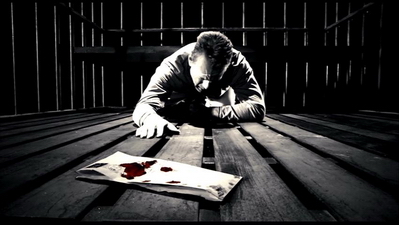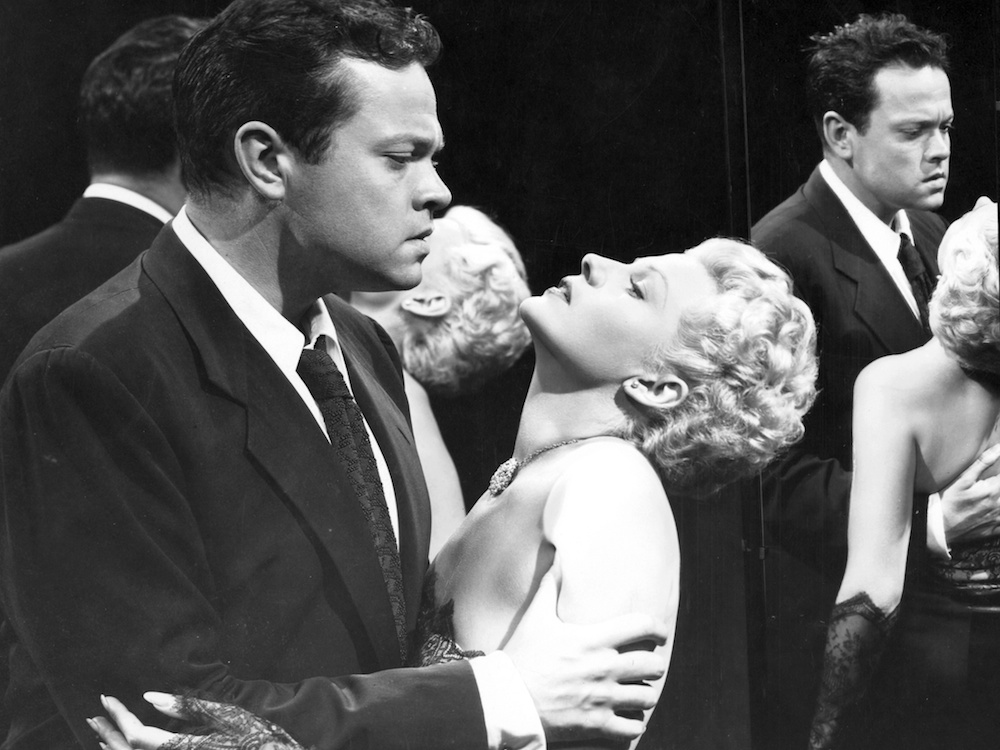Group of 3: Matilde, Hannah, Luke

Group of 3: Matilde, Hannah, Luke

“is a written work by screenwriters for a film, television show, or video game. Screenplays can be original works or adaptations from existing pieces of writing.” – including acting directions
– https://en.wikipedia.org/wiki/Screenplay

Screenplay refers to anything to be played on screen such as the narrative and is more aimed for the use by the director, whereas a script is a written text that includes dialogue between characters (more technical elements).
| Points: | The lady from Shanghai | Sin city |
| Point 1, Genre: American Film noir – the development of film noir | Classic technical elements used in cinematography, editing, narrative. | Modernised technical elements – greenscreen set, shot on digital, narrative dif |
| Point 2, History: The influence of major historical events and its effect on the theme of film noir, i.e. Post war anxiety, trauma, fear of infiltration, and loss of trust in law enforcement. | 1947 – 2 years after the war ended. Post war Recession – Cold war, anti-communist, Hiroshima. | 2001 – attack on the twin towers by terrorist group al-Qaeda. Trauma, fear of the other, loss of trust |
| Point 3, Post feminism: Historical context and the representation of femme fatale | Elsa Bannister her role as a femme fatale | Nancy Callahan her representation and roles in the film |
Point 1: Tropes, and themes associated with films
Point 2: The fear of the other within the community
Point 3: Post feminist culture – “Objectification to subjectification” – https://doi.org/10.1177/1367549407075898
| Title | Form | Harvard Reference | Last Assessed |
| notes on film noir | article | Author(s): Paul Schrader Source: Film Comment, Vol. 8, No. 1 (SPRING 1972), pp. 8-13 Published by: Film Society of Lincoln Center Stable URL: http://www.jstor.org/stable/43752885 | 19/5/22 |
| The Philosophy of Film Noir | article | Conard, M. T. (Ed.). (2006). The Philosophy of Film Noir. University Press of Kentucky. http://www.jstor.org/stable/j.ctt2jchn4 | 23/5/22 |
Encyclopedia of Film Noir | book | Mayer, Geoff. Encyclopedia of fi lm noir / by Geoff Mayer and Brian McDonnell. p. cm. https://books.google.je/books/about/Encyclopedia_of_Film_Noir.html?id=RsBHnZoyO4kC&source=kp_book_description&redir_esc=y | 23/5/22 |
The Philosophy of Neo-Noir (The Philosophy of Popular Culture) | book | Conard, Mark T., editor. The Philosophy of Neo-Noir. University Press of Kentucky, 2007. JSTOR, http://www.jstor.org/stable/j.ctt2jcts3. Accessed 23 May 2022. | 23/5/22 |
| Film Noir and the Cinema of Paranoia | book | Wheeler Winston Dixon https://doi.org/10.1515/9781474467766 | 23/5/22 |
| American Film Noir: The History of an Idea | Journal | Naremore, James. “American Film Noir: The History of an Idea.” Film Quarterly, vol. 49, no. 2, 1995, pp. 12–28. JSTOR, https://doi.org/10.2307/1213310. Accessed 23 May 2022. | 23/5/22 |
| Projecting Trauma: The Femme Fatale in Weimar and Hollywood Film Noir. | Extract | Hales, Barbara. “Projecting Trauma: The Femme Fatale in Weimar and Hollywood Film Noir.” Women in German Yearbook, vol. 23, 2007, pp. 224–43. JSTOR, http://www.jstor.org/stable/20688286. Accessed 23 May 2022. | 23/5/22 |
| Agency and Fate in Orson Welles’s The Lady from Shanghai | Journal | Pippin, Robert B. Critical Inquiry Vol. 37, No. 2 (Winter 2011), pp. 214-244 (31 pages) Published By: The University of Chicago Press https://www.jstor.org/stable/10.1086/657291 | 23/5/22 |
| Film Noir: From Berlin to Sin City | Journal | Allison, Deborah. “Film Noir: From Berlin to Sin City.” Film Quarterly, vol. 60, no. 2, 2006, pp. 80–81. JSTOR, https://doi.org/10.1525/fq.2006.60.2.79.3. Accessed 23 May 2022. | 23/5/22 |
| Crime, Guilt, and Subjectivity in “Film Noir” | Journal | Fluck, Winfried. “Crime, Guilt, and Subjectivity in ‘Film Noir.’” Amerikastudien / American Studies, vol. 46, no. 3, 2001, pp. 379–408. JSTOR, http://www.jstor.org/stable/41157665. Accessed 23 May 2022. | 23/5/22 |
| Anxiety and hope in the aftermath of ww2 | Article | http://www.vam.ac.uk/content/articles/a/anxiety-and-hope-in-the-aftermath-of-world-war-ii/ | 23/5/22 |
Q: How has the Film Noir subgenre changed over time using the films Sin City (FrankMiller, Robert Rodriguez, 2005, USA) and Lady from Shanghai (Welles, 1947, USA)?
Introduction:
In Miller and Rodriguez’s 2005 film ‘Sin City’ and Welles’ 1947 film ‘Lady from Shanghai’. Both films are widely recognisable as being significant in ways in which they incorporate elements from film noir and apply them to technical and narrative elements. With Sin City and its use of digital visual effects to create the unique visual effects seen throughout the film, and ‘The Lady from Shanghai’ with its use of well-known actors and methods seen in classic Film Noir. These films have been chosen for their applicability to the film noir subgenre and the contrast and influence of the cultural context at the time the film was made.
Marv wakes next to Goldie’s dead body

John receives a letter with a severed finger inside

Mirror scene – shootout between

‘The Lady from shanghai – 1947’
‘Sin city – 2004’
American Cinema/American Culture, John Belton:
Belton writes, “film noir grapples, as Robert Porfirio suggests, with existential issues such as the futility of individual action; the alienation, loneliness, and isolation of the individual in industrialized, mass society; the problematic choice between being and nothingness; the absurdity, meaninglessness, and purposelessness of life; and the arbitrariness of social justice, which results in individual despair, leading to chaos, violence, and paranoia.”
Camera:
Narrative:
Camera:
Narrative:
References:
JMR – Defining Film noir
Britannica – Characteristics of film noir
Taste of Cinema – Reasons why sin city is a neo-noir classic
A level film fact sheet (WJEC) – Lady from Shanghai
Classic Noir: “The Lady from Shanghai – 1947”

Contemporary Noir: “Sin City – 2005”

Femme fatale – feminist theory?
Film noir theory?
Post modernism in film – manipulation of narrative/genre?
Marxism theory in film?
Editing theory – experimental film?
South korean new wave?
Soviet constructivism?
No wave cinema?
Classic Hollywood/New Hollywood?
Soviet constructivism?
Microsoft stream link:
https://web.microsoftstream.com/video/1e2f8021-b250-42a5-90e8-c95898395aba